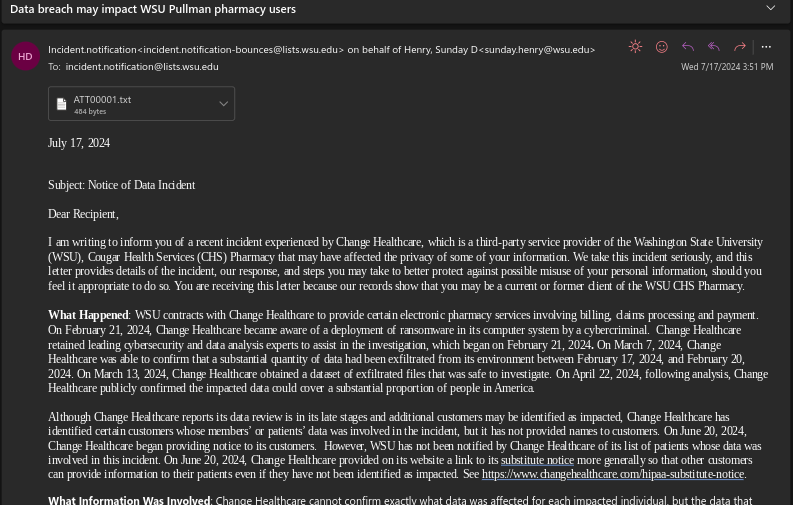As the season shifts to cooler weather and shorter days, the bears at WSU’s Bear Center are becomingly noticeably less active and are usually seen sleeping or sluggishly poking around their enclosure.
Bear Manager Chelsea Davis said in early September, anyone could pull into the Bear Center on Terre View Drive and watch bears enjoying the sun in their yard, rustling for grass, or possibly even interacting with Davis as she convinces them to move from one space to another, usually with food for motivation.
Although the bears are slowing down, most research centered around them is not, Davis said. Because of bears’ unique hibernation ability, a large amount of the research at the center focuses around that function.
“What I really like about the bears is their intelligence, which makes them great for things like enrichment, training and projects,” Davis said.
Davis said she pivoted to exotic animal care, which most recently balances properly caring for the bears with research efforts, from pursuing veterinary schooling early in her career. An average day can range anywhere from letting the bears bat coolers around to collecting poop samples.
“We have a cooler project where we test bear-resistant products, so that day the bears [go out] into the yard and throw coolers around. That’s a fun day for them,” Davis said. “We’ve been asked to help out West Yellowstone with Bear Resistant Product Testing. I love it because it has great conservation implications and it’s great enrichment.”
Optimizing bear-resistant products goes a long way to prevent bears from associating humans with food acquisition, which minimizes human-bear conflict and conserves more bears in the wild, she said.
“We’re also doing a collaboration with Texas A&M on protein and macronutrient absorption in grizzly bears. In captivity, with some bears we saw issues that were causing shorter lifespans, typically over-protein,” Davis said.
This research involves measuring the efficiency of bears’ protein digestion through different seasonal phases, using several different methods to determine how much energy they are using, Davis said. The end-goal of this type of research is the improvement of the bears’ quality of life.
However, one of the longest-running research projects with the bears is studying the bears’ insulin resistance levels throughout the hibernation cycle, she said. Bears put on upwards of 100 pounds of fat during hyperphagia (the period in fall when they eat as much as possible), with no apparent health defects.
“If it was a human gaining 100 pounds of fat, we’d be looking at cardiac, muscle, bone issues. But what we were really interested in was how come they do not get insulin resistant like humans would, and get Type II diabetes?” Davis said.
Davis said the bear research team found eight potential proteins that are responsible for this expression of varying insulin resistance. It seems like they actually do become insulin resistant for that time, and reverse it, which is something pharmaceuticals could look into to alter bloodstream chemistry, possibly in humans.
“Bears likely mediate insulin sensitivity using season-specific factors which act on insulin signaling pathways and which are required for bears to survive the prolonged winter fast … Concentrations of insulin-signaling phosphoproteins exhibited a variety of tissue and season-specific differences,” according to a paper on the nature of insulin interaction in bears written by a group associated with the Bear Center.
While the bears nap for most of the winter, students and researchers are using the unique opportunity afforded by the Bear Center to dig for solutions to problems, for both bears and humans, Davis said.
“People hear that we’re working on insulin resistance and bone density and say, ‘oh, like NASA’s astronauts!’ Yes, but also people here on earth who are bedridden, or someone who needs it to be safe to stay in bed after a surgery. The applications vary all over,” Davis said.















